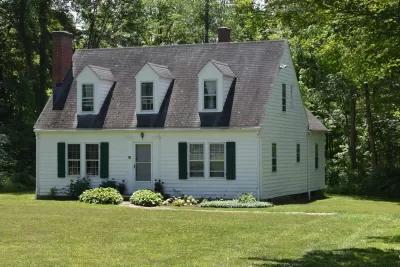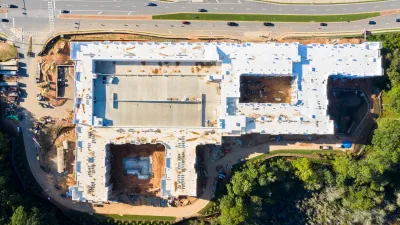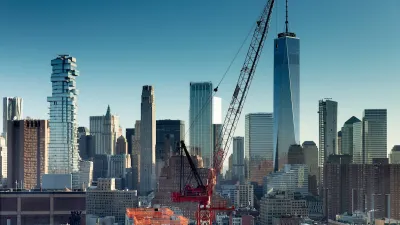Buying a house through the Sears catalog was, for a brief historical moment, a popular and affordable way to become a homeowner.

In an article in Fast Company, Adele Peters wonders why the Sears catalog homes popular in the early 20th century are no longer an affordable housing option. “When a $1.1 million Craftsman house in Boulder, Colorado, was first built in 1923, the materials came from a Sears catalog kit that cost $1,797, or the equivalent of around $32,000 today. Even with the extra cost of buying land, adding a foundation, plumbing, electricity, and potentially hiring a construction crew—though the house could technically be put together yourself, Ikea-style—it might have cost a total of around $64,000 in today’s dollars, a fraction of what it costs to build or buy a house now.”
As Peters notes, this wasn’t due to a lack of quality, either. “Sears used high-quality materials, and a century later, people still want to buy the houses. What made it economically possible for the company to offer this type of kit house then—and is it possible to do it today?” This was due in part to lower material costs, pre-fabrication and bulk purchasing, and the fact that many of the buyers built the home themselves.
So what are the challenges to replicating the success of the Sears catalog home now? “Large companies now could replicate that scale in prefab factories, but there are other challenges. Modern houses have more features that add to the cost—including insulation, energy-efficient windows, and new safety features.” Moreover, zoning regulations and building codes decided at the local level make it difficult to mass-produce homes that would pass every locality’s requirements.
Zoning reforms that lead to more permissive codes and state-level zoning changes can bring back the market for pre-fabricated homes. The concept is already popular with organizations building emergency shelter housing and vacation rentals. Some cities, such as Los Angeles, have developed a set of pre-approved designs for accessory dwelling units (ADUs), an increasingly popular tool for boosting the housing supply.
FULL STORY: A Sears house today should cost $32,000. Why can’t you buy one?

Maui's Vacation Rental Debate Turns Ugly
Verbal attacks, misinformation campaigns and fistfights plague a high-stakes debate to convert thousands of vacation rentals into long-term housing.

Planetizen Federal Action Tracker
A weekly monitor of how Trump’s orders and actions are impacting planners and planning in America.

In Urban Planning, AI Prompting Could be the New Design Thinking
Creativity has long been key to great urban design. What if we see AI as our new creative partner?

King County Supportive Housing Program Offers Hope for Unhoused Residents
The county is taking a ‘Housing First’ approach that prioritizes getting people into housing, then offering wraparound supportive services.

Researchers Use AI to Get Clearer Picture of US Housing
Analysts are using artificial intelligence to supercharge their research by allowing them to comb through data faster. Though these AI tools can be error prone, they save time and housing researchers are optimistic about the future.

Making Shared Micromobility More Inclusive
Cities and shared mobility system operators can do more to include people with disabilities in planning and operations, per a new report.
Urban Design for Planners 1: Software Tools
This six-course series explores essential urban design concepts using open source software and equips planners with the tools they need to participate fully in the urban design process.
Planning for Universal Design
Learn the tools for implementing Universal Design in planning regulations.
planning NEXT
Appalachian Highlands Housing Partners
Mpact (founded as Rail~Volution)
City of Camden Redevelopment Agency
City of Astoria
City of Portland
City of Laramie





























